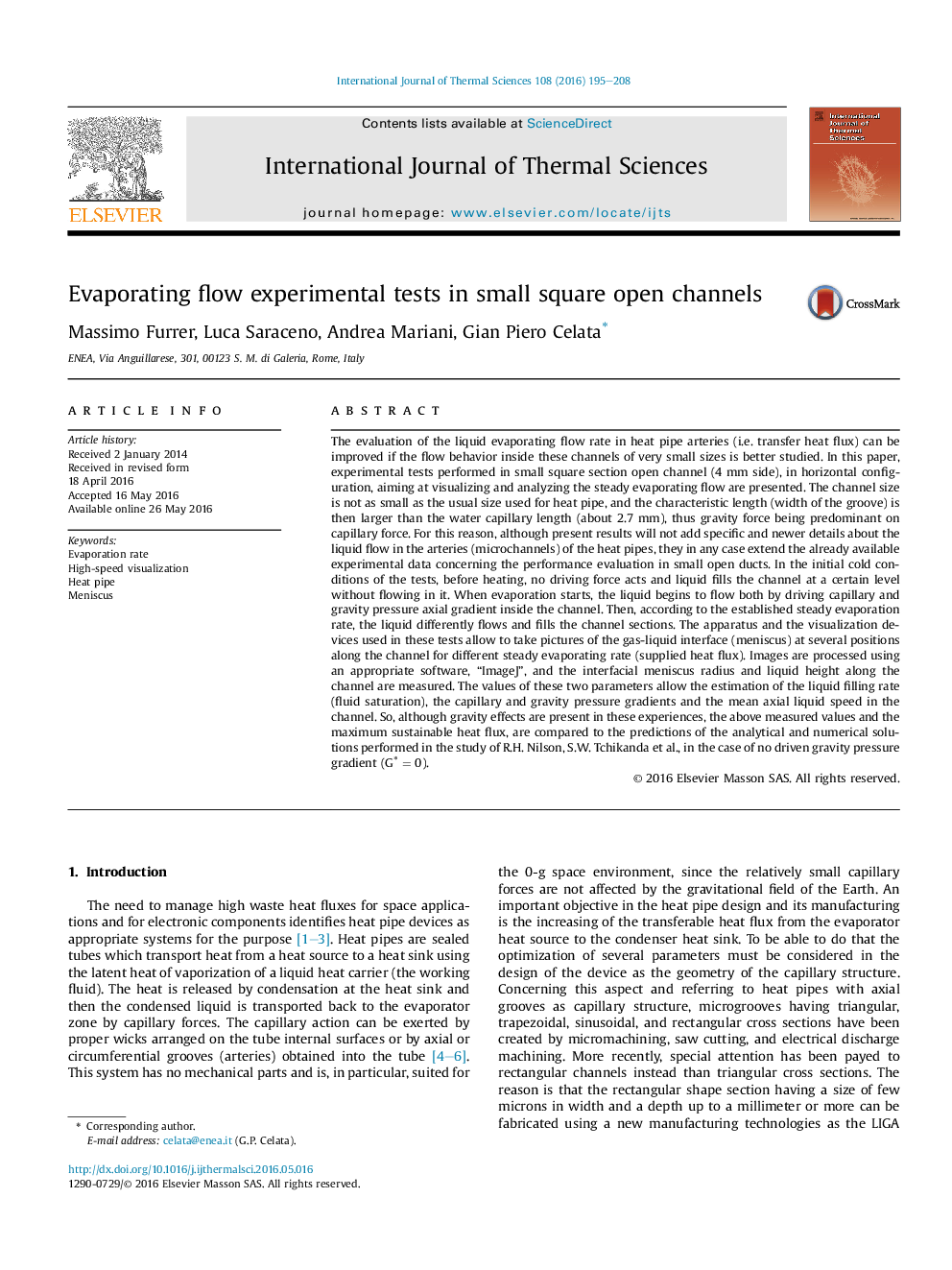| کد مقاله | کد نشریه | سال انتشار | مقاله انگلیسی | نسخه تمام متن |
|---|---|---|---|---|
| 668324 | 1458714 | 2016 | 14 صفحه PDF | دانلود رایگان |
• Visualization with high-speed camera is used to analyze liquid flow behavior in an open channel.
• Liquid meniscus is obtained from image processing of visualization.
• Evaporation rate in the evaporator is evaluated.
• Comparison between experimental data and available models is accomplished.
The evaluation of the liquid evaporating flow rate in heat pipe arteries (i.e. transfer heat flux) can be improved if the flow behavior inside these channels of very small sizes is better studied. In this paper, experimental tests performed in small square section open channel (4 mm side), in horizontal configuration, aiming at visualizing and analyzing the steady evaporating flow are presented. The channel size is not as small as the usual size used for heat pipe, and the characteristic length (width of the groove) is then larger than the water capillary length (about 2.7 mm), thus gravity force being predominant on capillary force. For this reason, although present results will not add specific and newer details about the liquid flow in the arteries (microchannels) of the heat pipes, they in any case extend the already available experimental data concerning the performance evaluation in small open ducts. In the initial cold conditions of the tests, before heating, no driving force acts and liquid fills the channel at a certain level without flowing in it. When evaporation starts, the liquid begins to flow both by driving capillary and gravity pressure axial gradient inside the channel. Then, according to the established steady evaporation rate, the liquid differently flows and fills the channel sections. The apparatus and the visualization devices used in these tests allow to take pictures of the gas-liquid interface (meniscus) at several positions along the channel for different steady evaporating rate (supplied heat flux). Images are processed using an appropriate software, “ImageJ”, and the interfacial meniscus radius and liquid height along the channel are measured. The values of these two parameters allow the estimation of the liquid filling rate (fluid saturation), the capillary and gravity pressure gradients and the mean axial liquid speed in the channel. So, although gravity effects are present in these experiences, the above measured values and the maximum sustainable heat flux, are compared to the predictions of the analytical and numerical solutions performed in the study of R.H. Nilson, S.W. Tchikanda et al., in the case of no driven gravity pressure gradient (G∗ = 0).
Journal: International Journal of Thermal Sciences - Volume 108, October 2016, Pages 195–208
